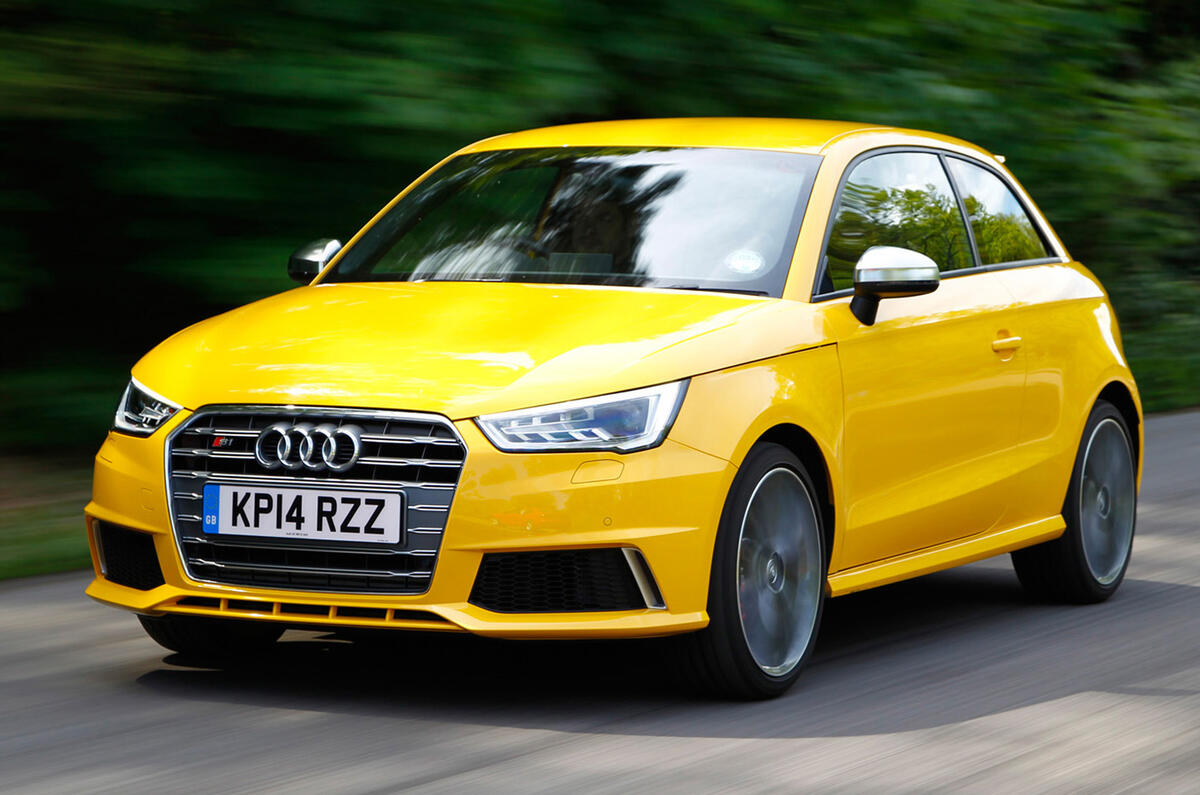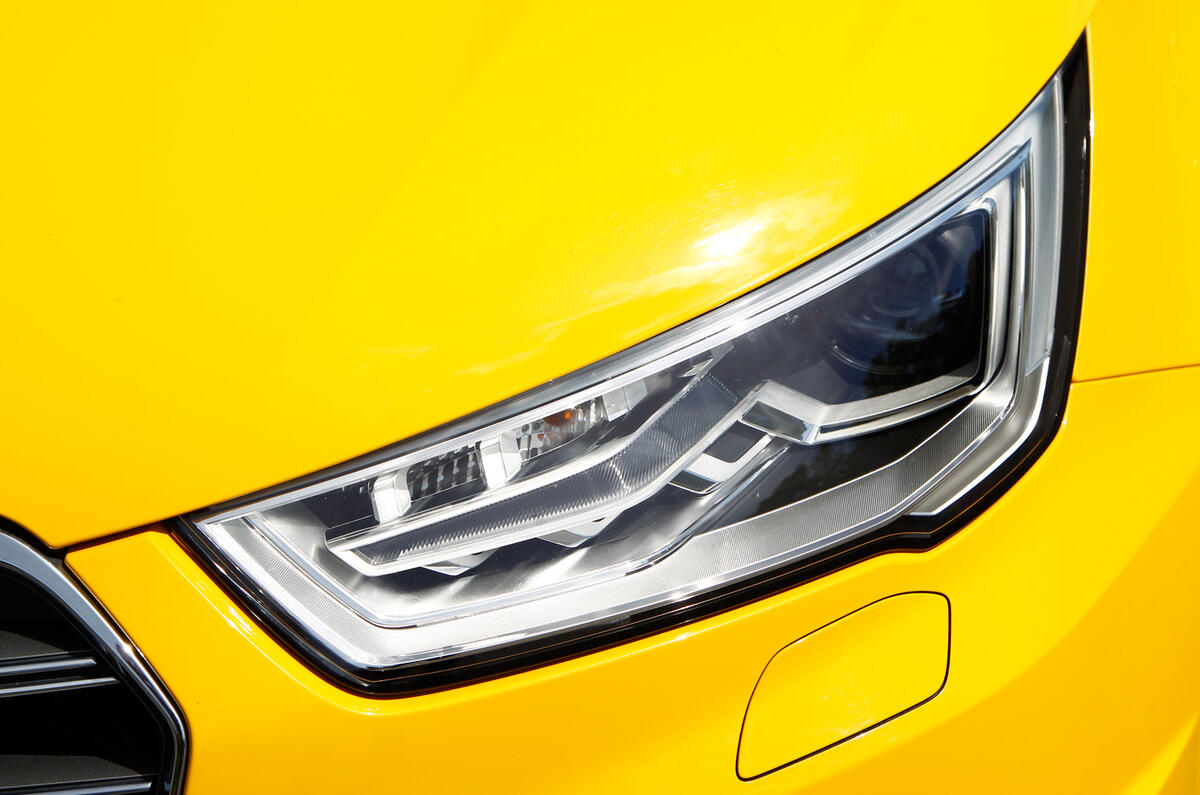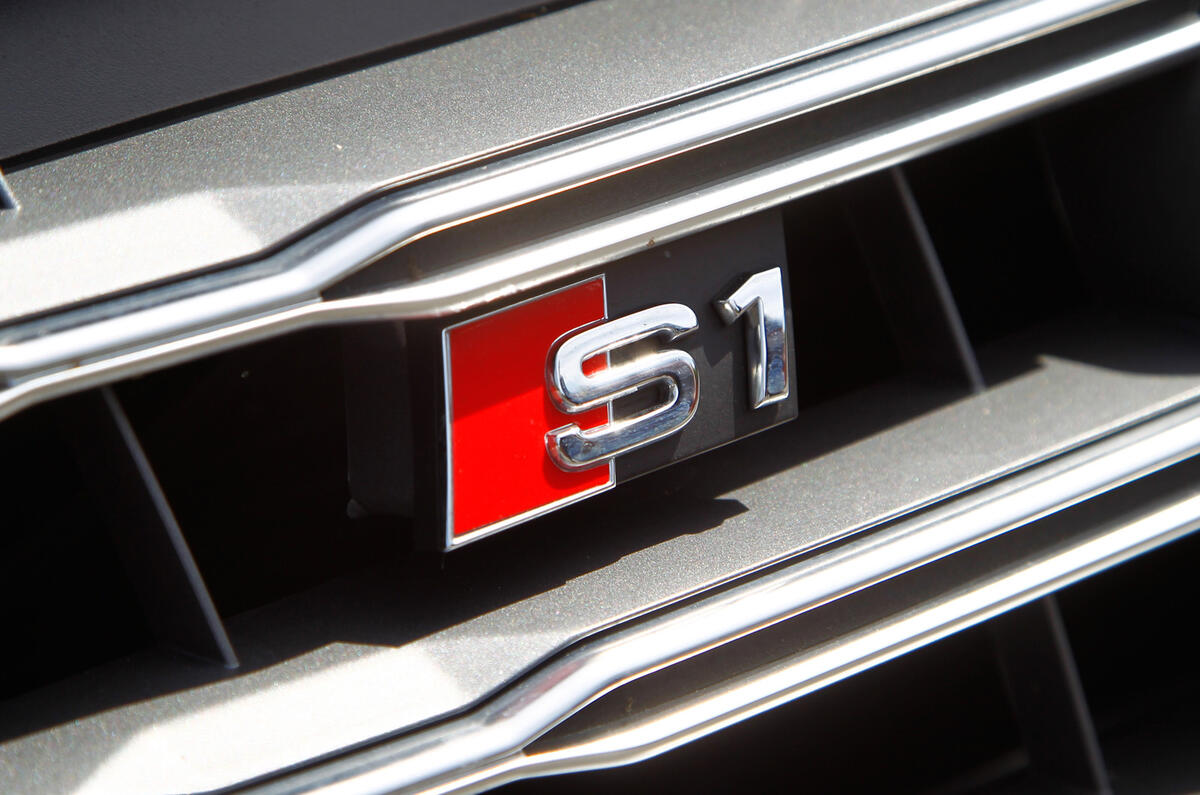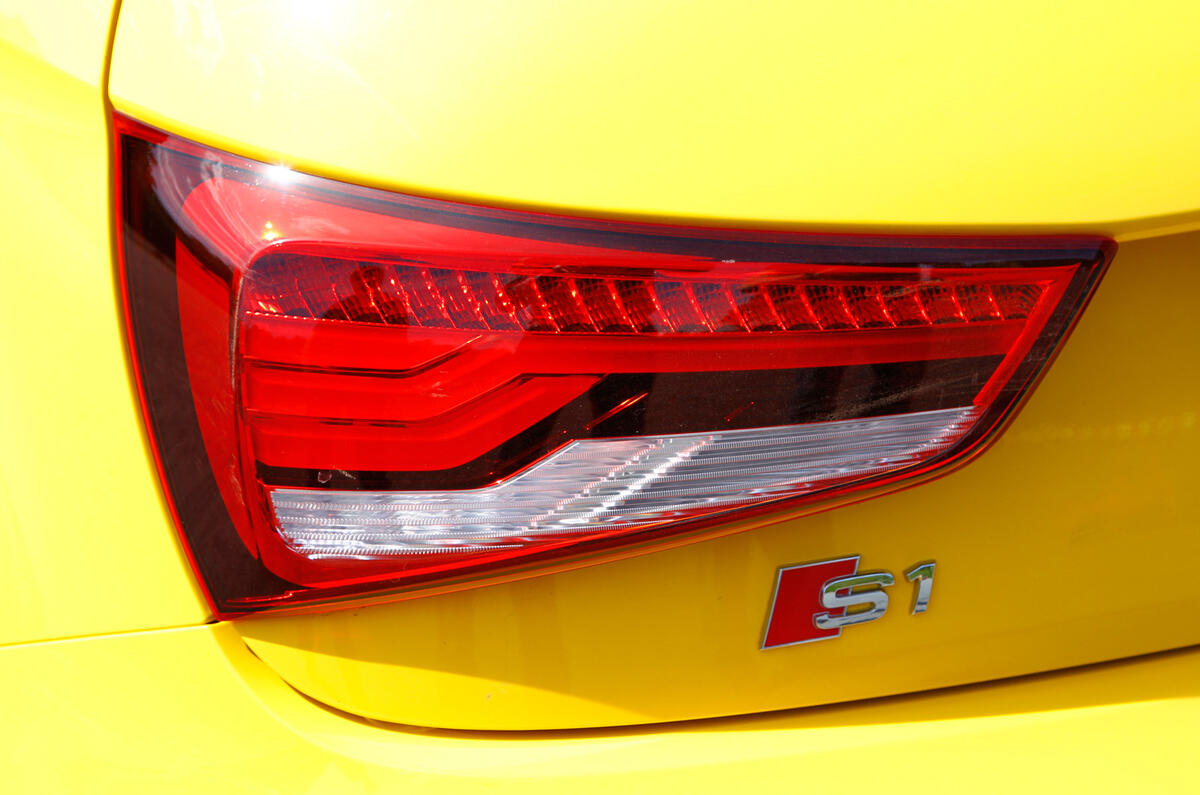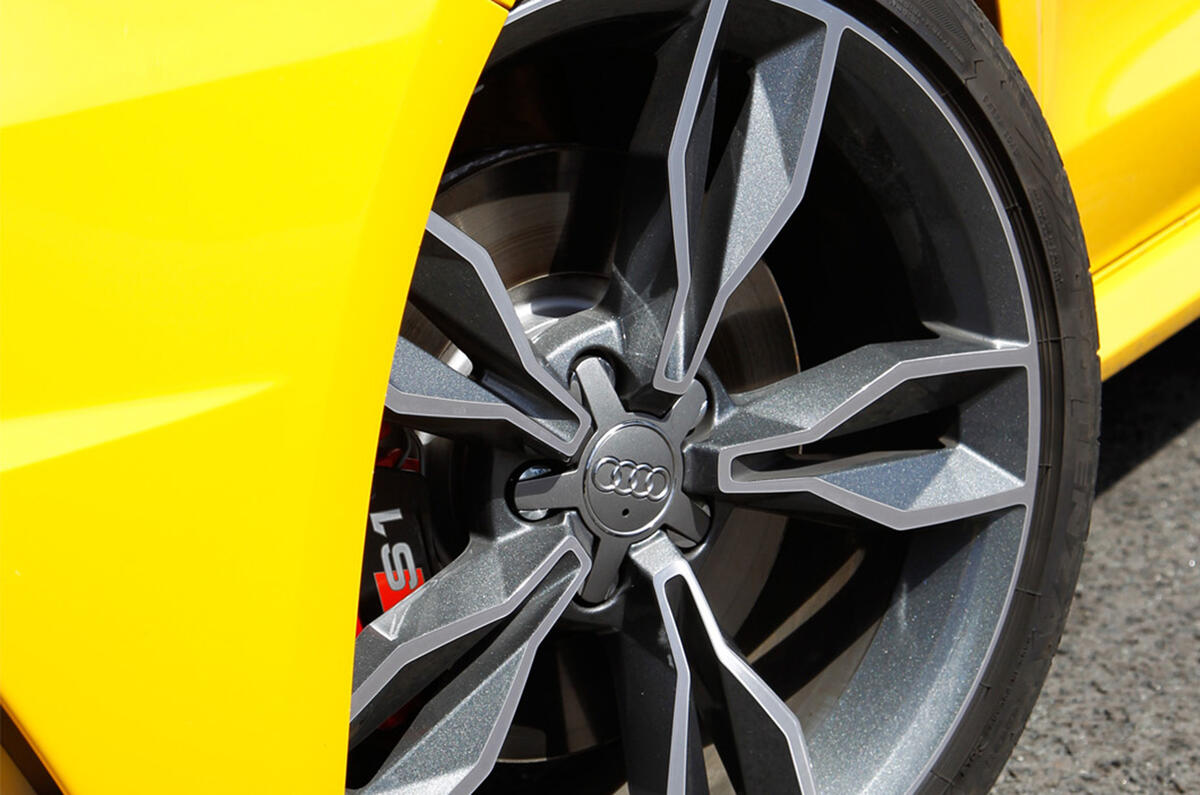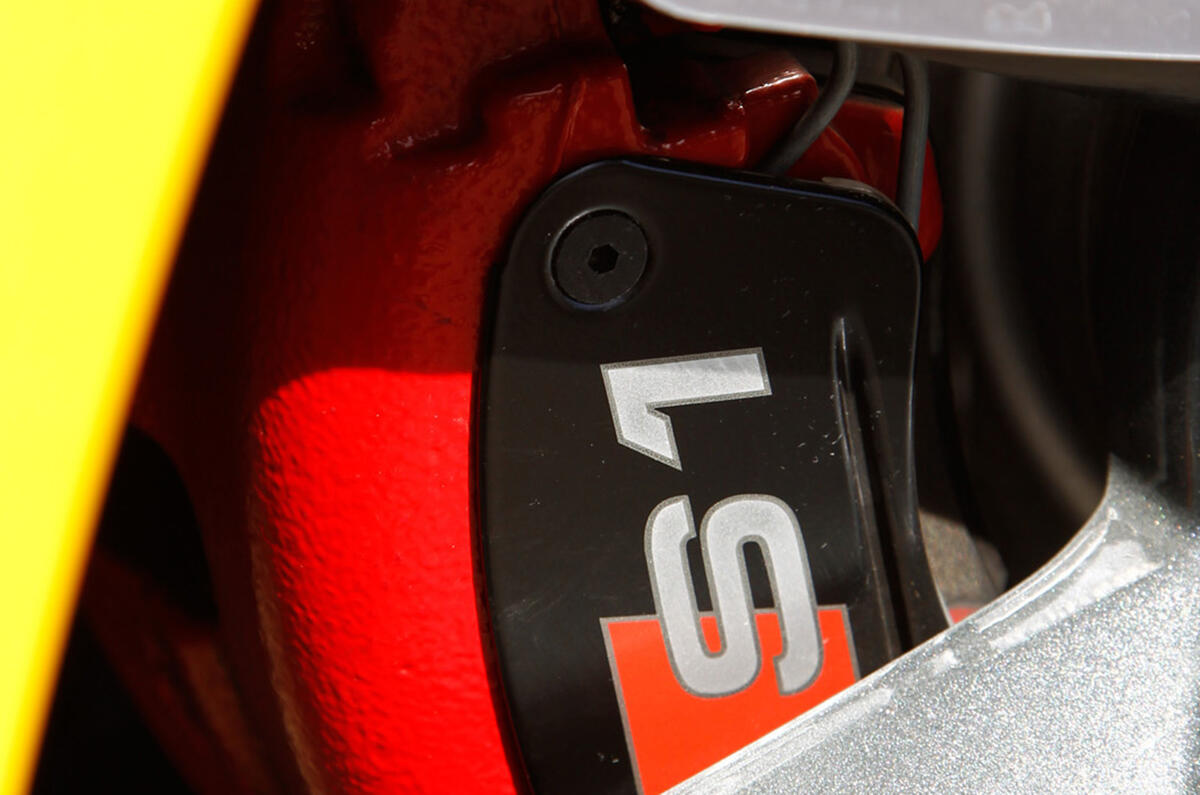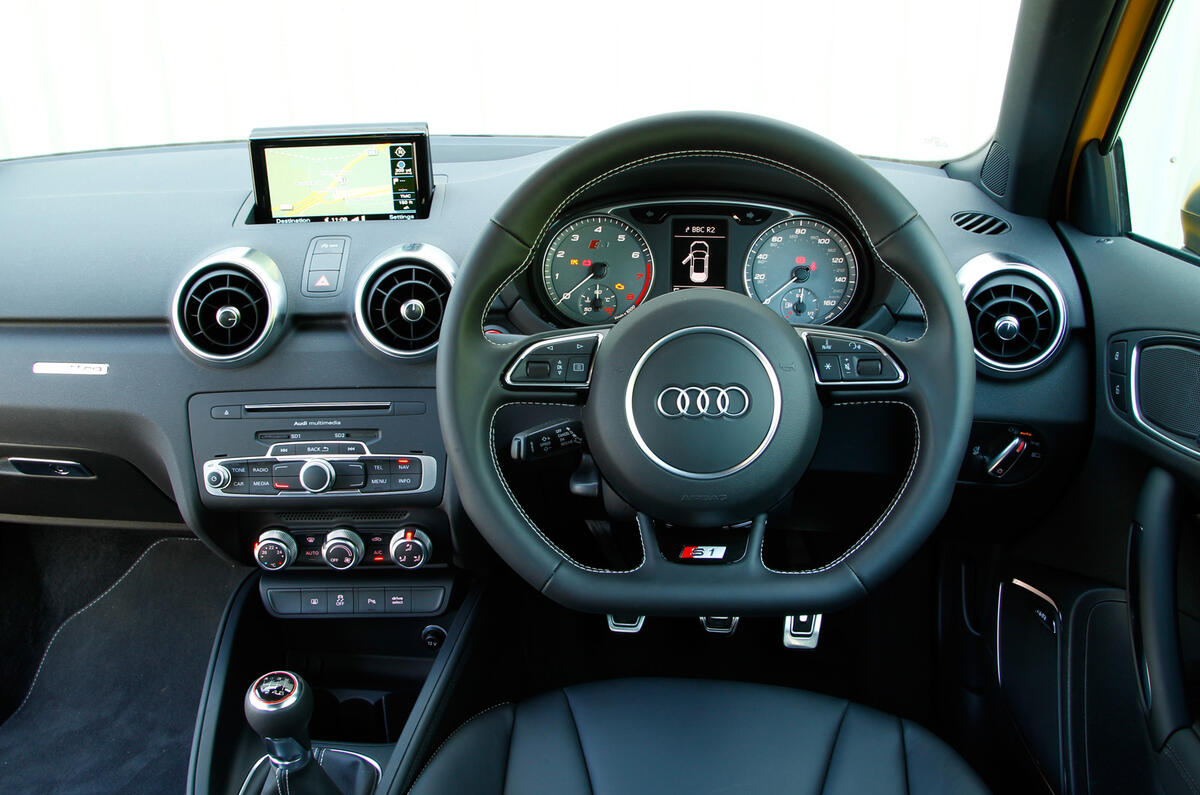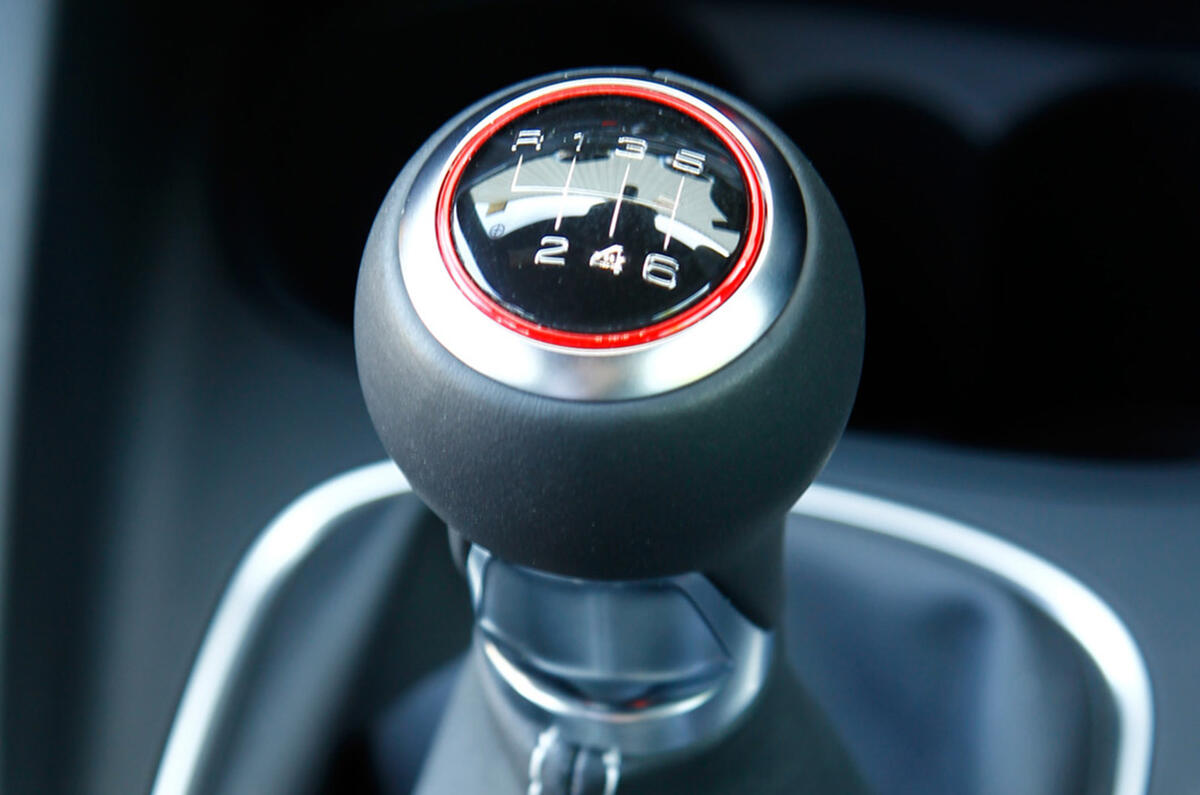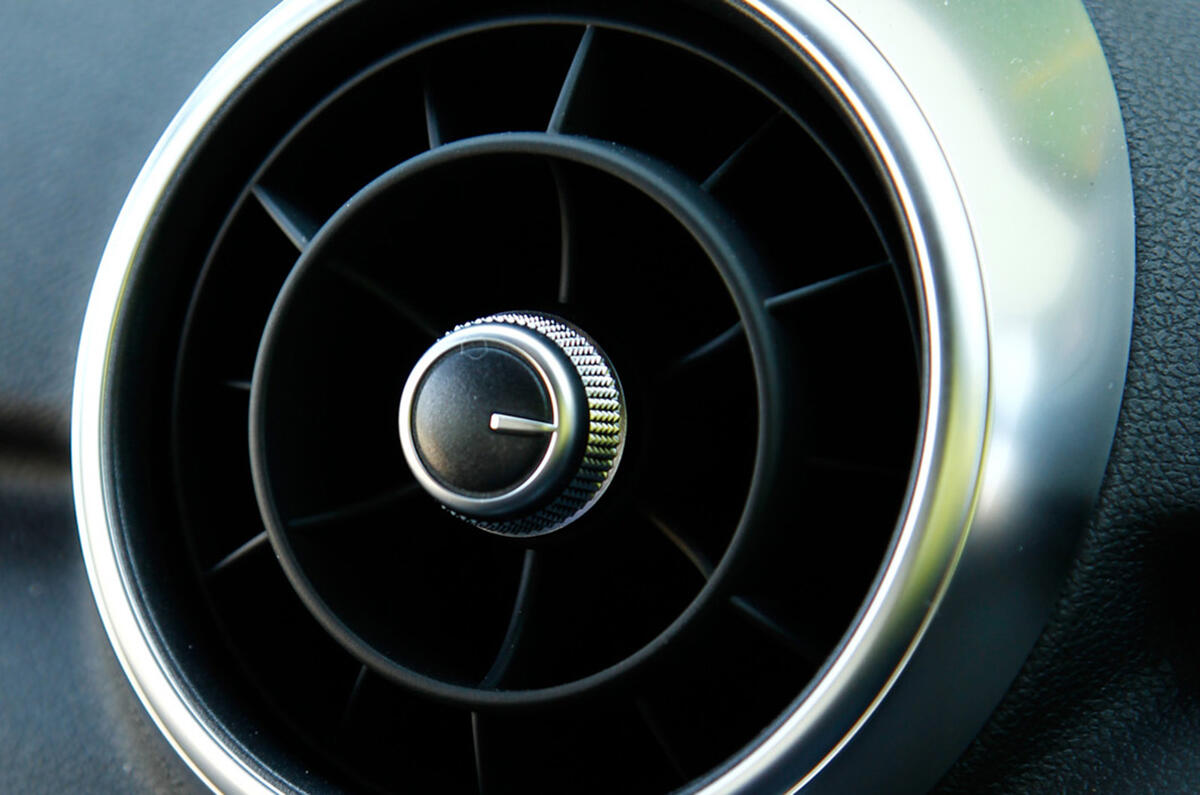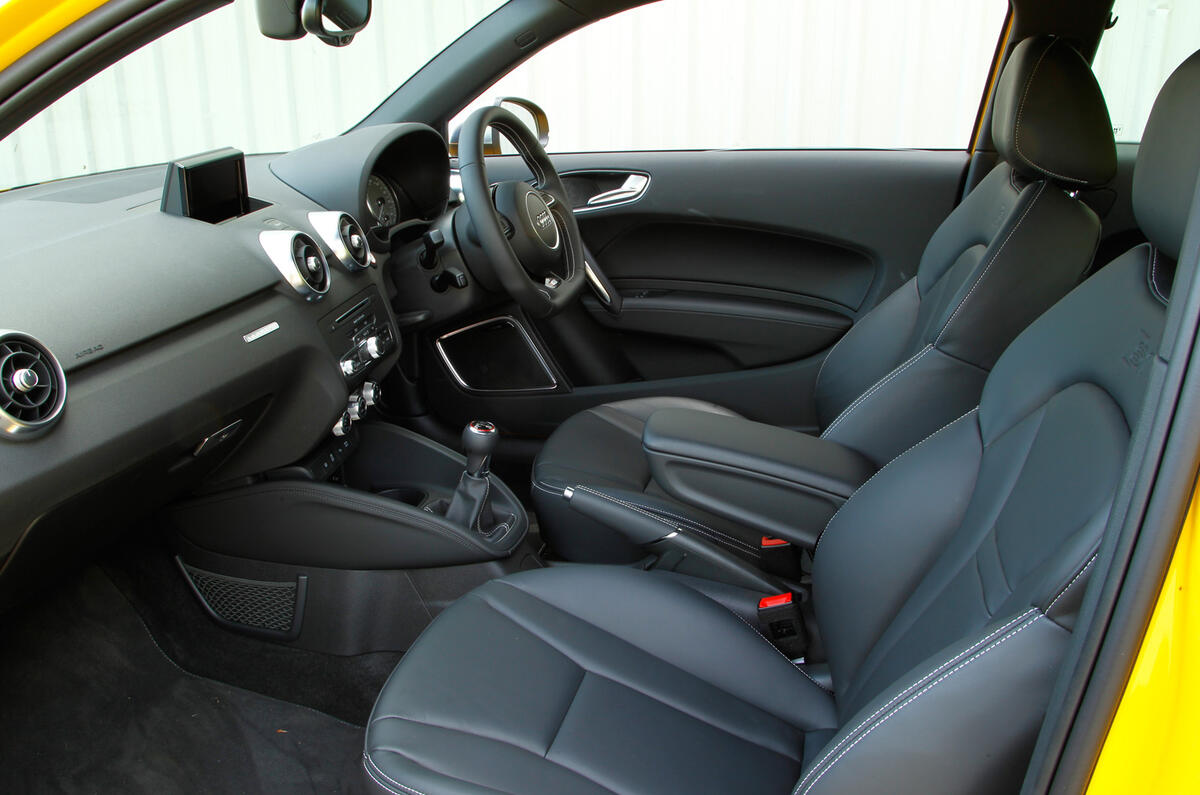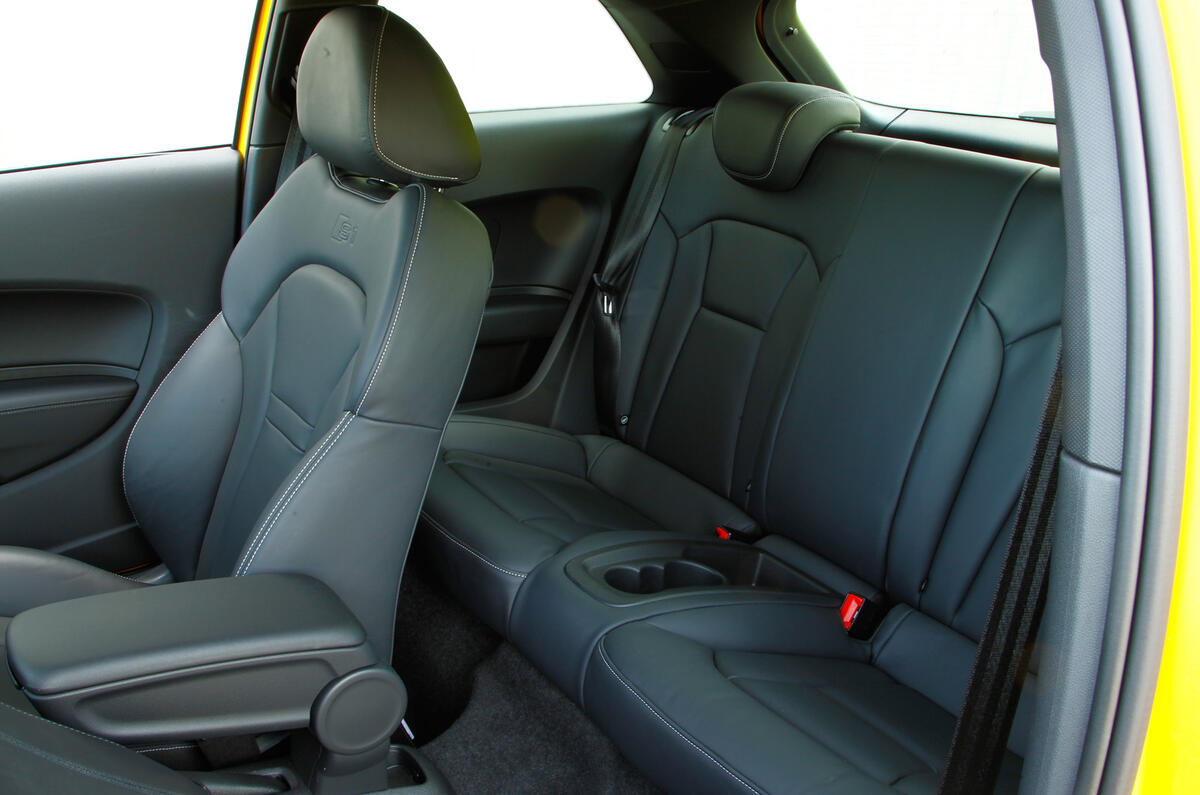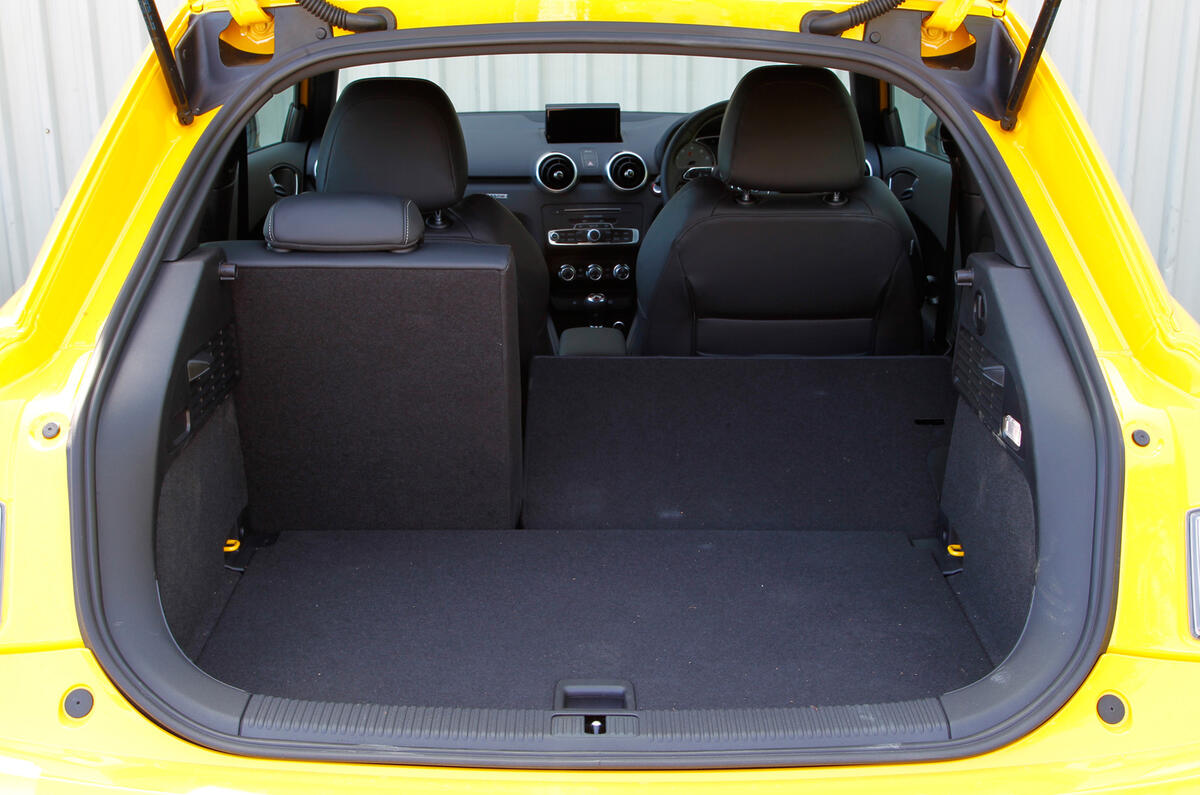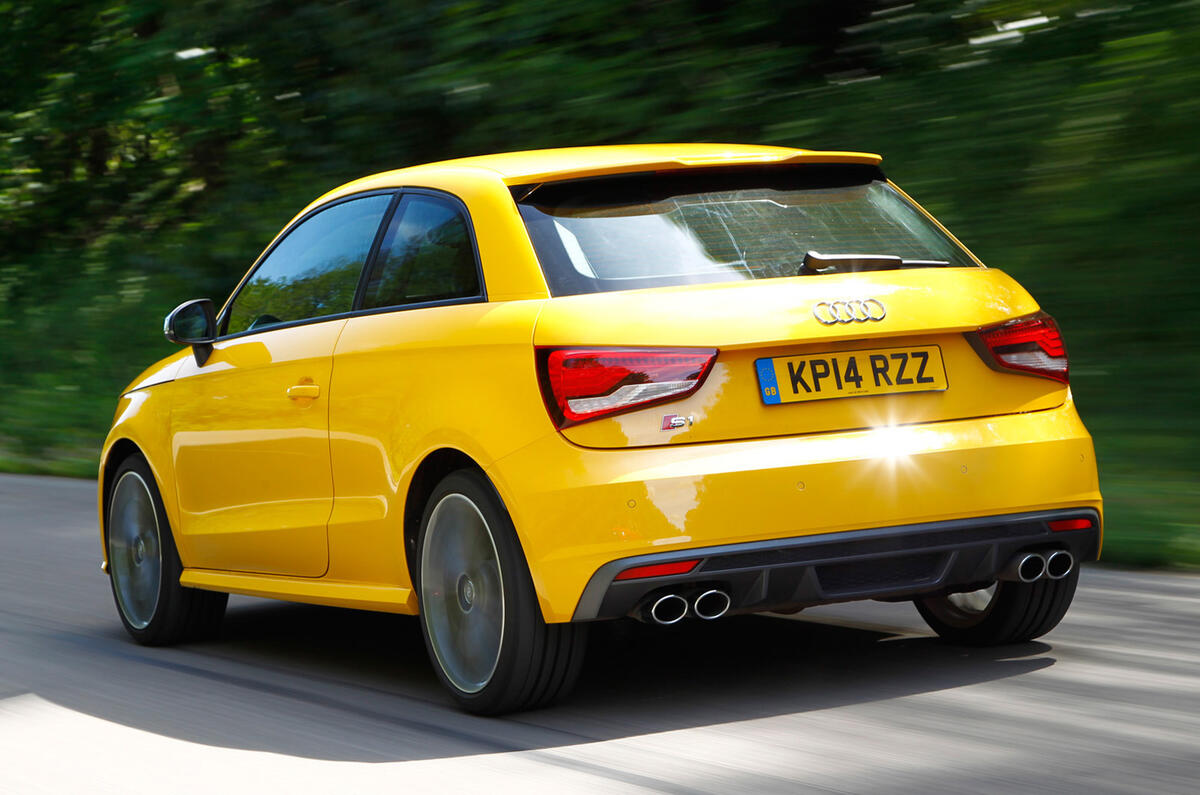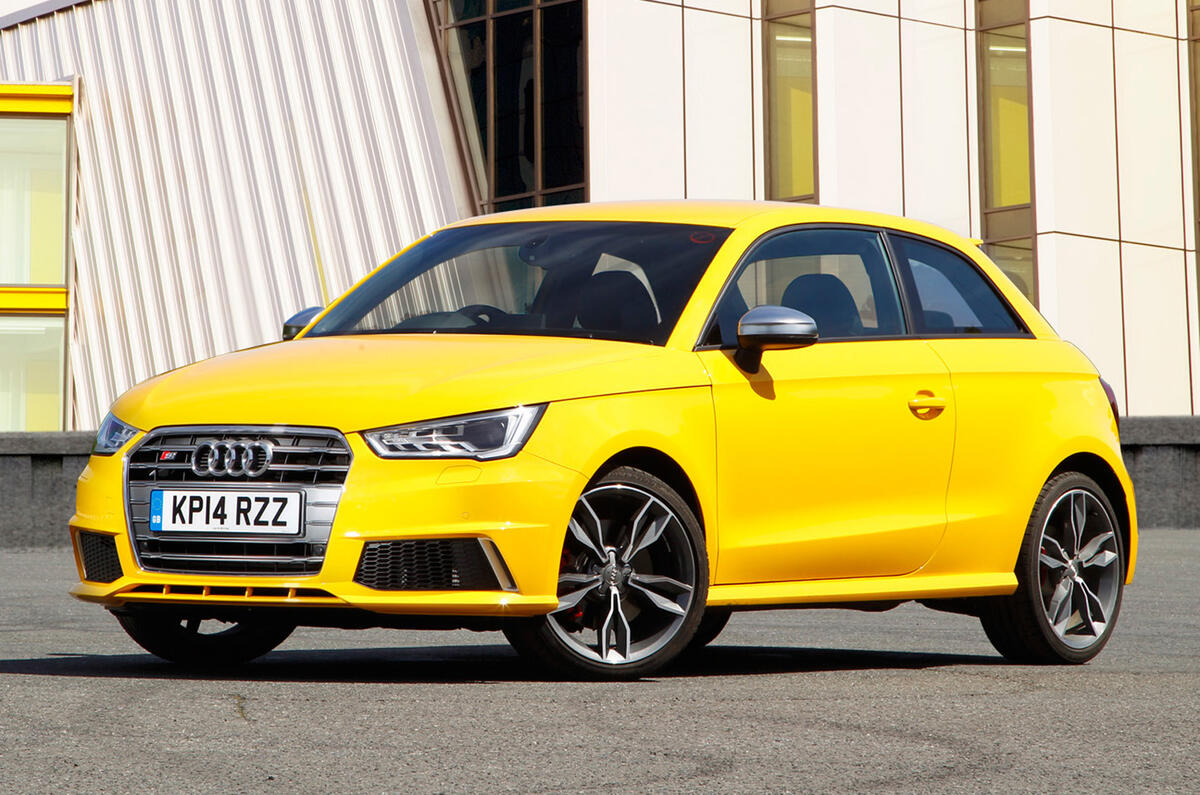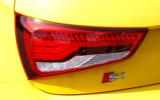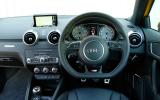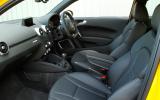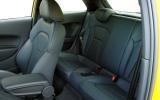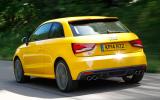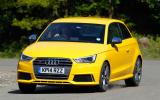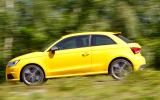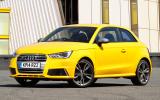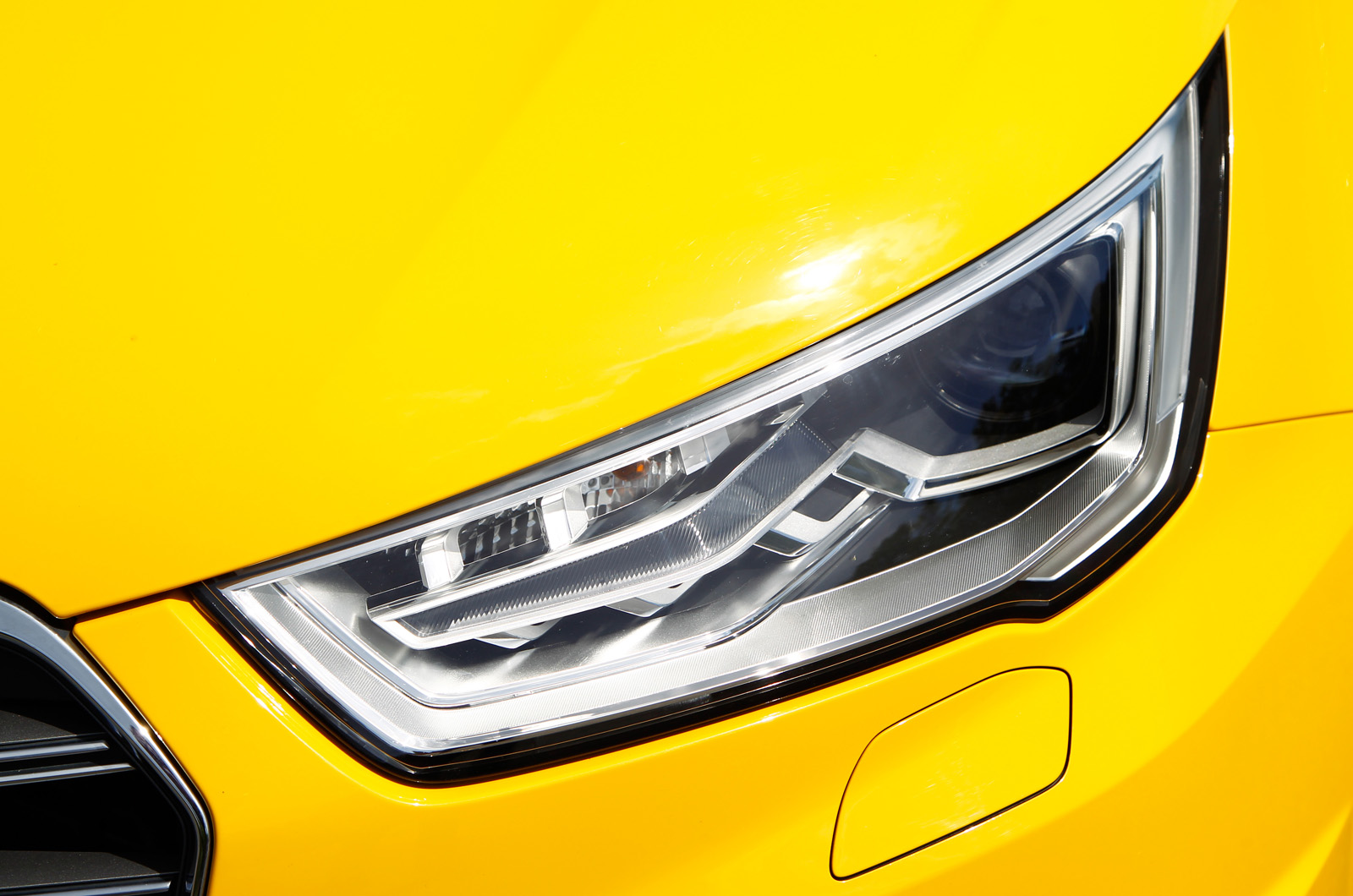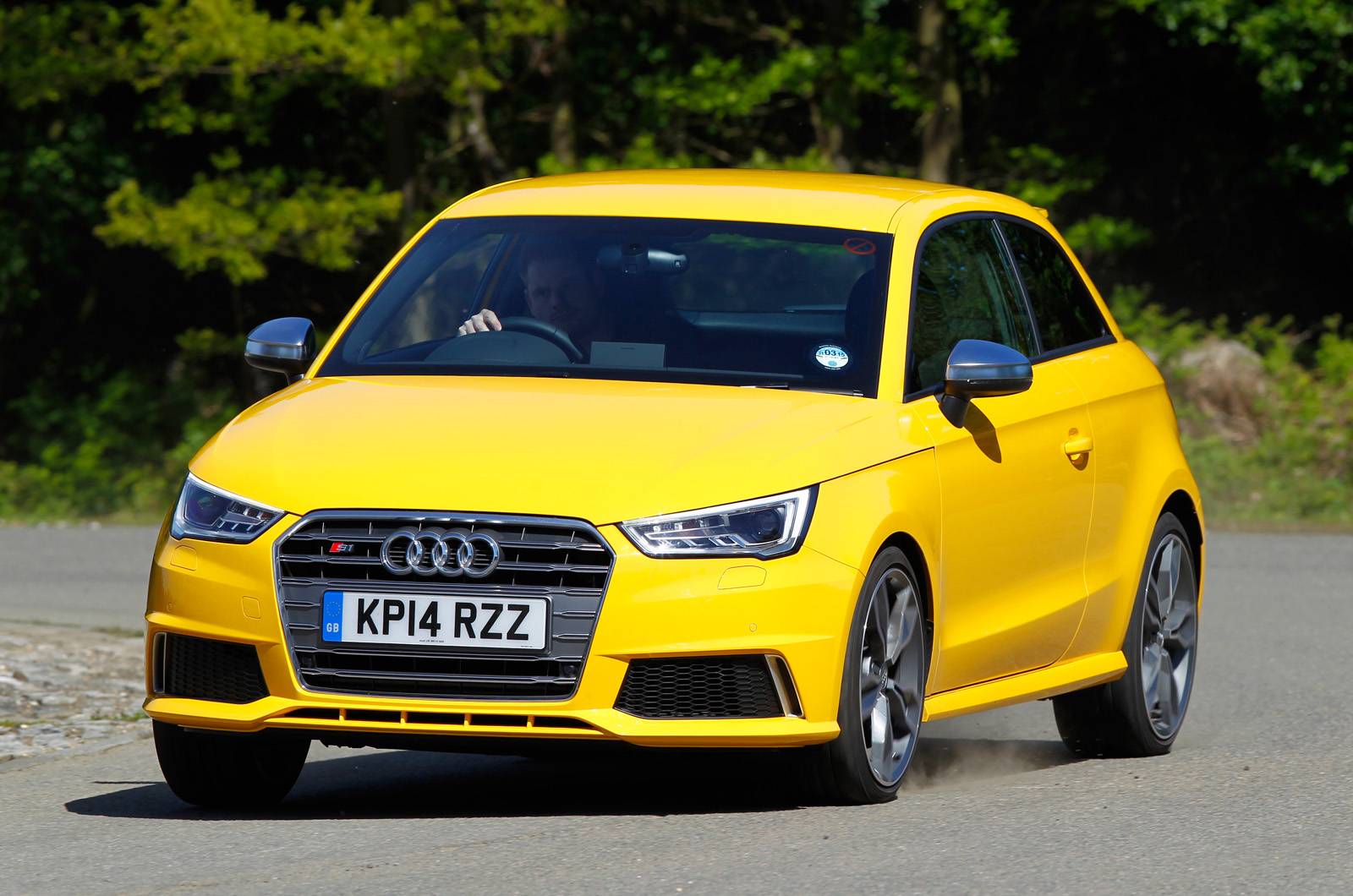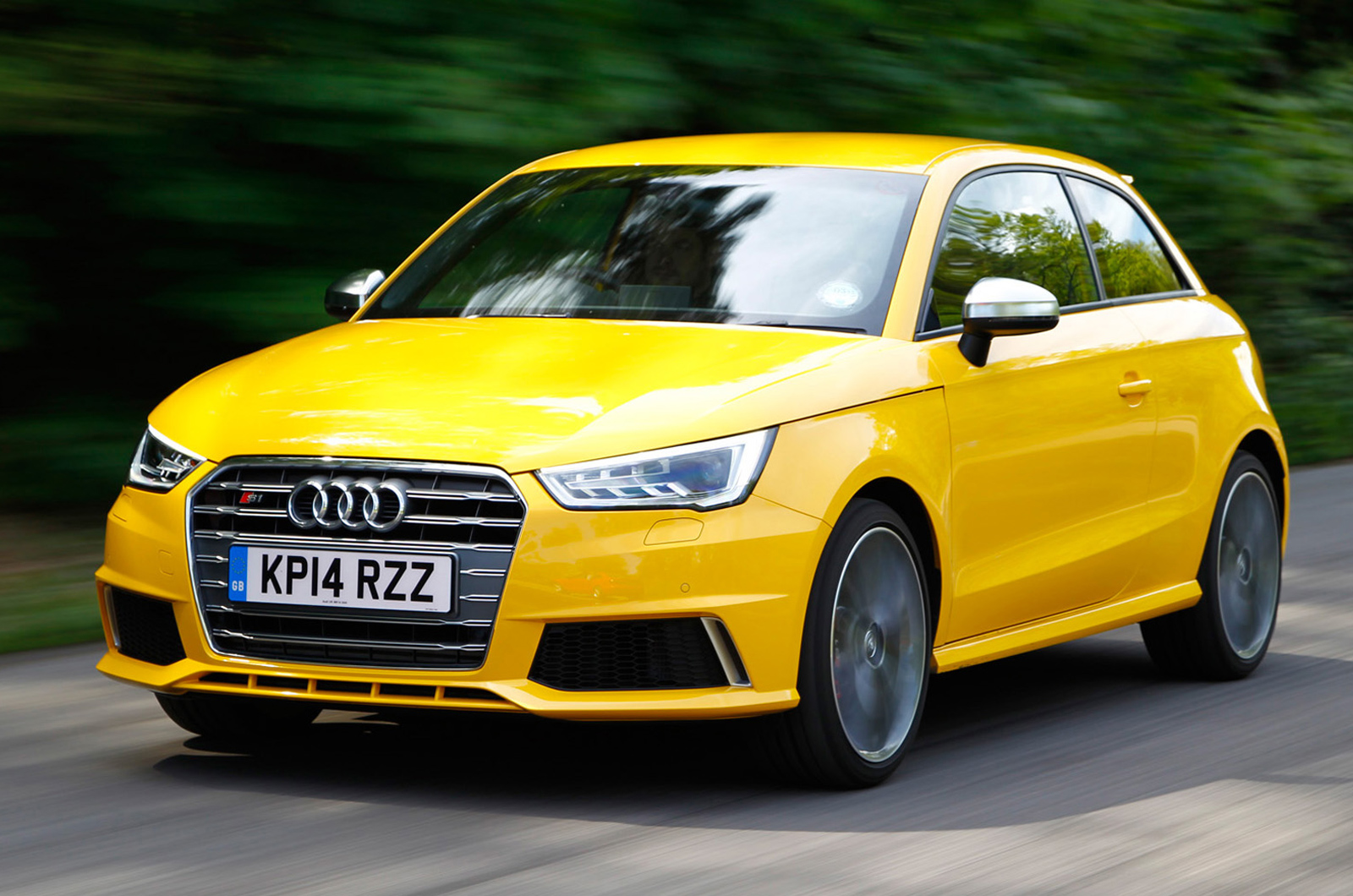At first glance, there’s not a great deal to mark out the S1 from regular Audi A1 hatches. But if you get the chance to put the two side by side and take a closer look, it’s easier to spot.
Then you can tell that the S1 rides 25mm lower than standard Audi A1s, and although there are no changes – unsurprisingly – to the metalwork, the front bumper is deeper and the front grille allows more air into the engine bay. The sills are deeper and there are aerodynamic addenda (or an impression of them) at the rear.
The engine is the Volkswagen Group’s ubiquitous 2.0-litre ‘EA888’ engine, as you’ll also find in everything from an Audi TT to a Volkswagen Golf R. As always, there is the mention of unique tuning – true to an extent, because the exhaust and induction routing of no two models is quite the same.
But the reality is that there are few changes to this widely used engine that, here, develops 228bhp and 273lb ft of torque, which plateaus from as little as 1600rpm. The RS1 scheduled to make its debut in 2017, will produce 280bhp from the same 2.0-litre 'EA888' engine.
It drives through a six-speed manual gearbox only. In most EA888 applications, there’s at least the option of a dual-clutch automatic, but there’s something determinedly old-school and likeable about the lack of such a choice here, and it drives through a four-wheel drive system, which is where the S1 gets interesting.
If you’ve looked at the S1’s list price and are wondering where a figure the wrong side of £25,000 comes from, it’s the fact that, to house the quattro permanent four-wheel drive system and its newly developed hydraulically controlled multi-plate clutch on the rear axle, the S1 requires a four-link suspension system rather than the torsion beam of the standard car.
Usually, the Audi A1 comes with a torsion beam rear axle — a compact set-up that most small cars need if they’re going to retain competitive boot space and, more crucially, to be sold at a competitive price.
But that doesn’t work with a four-wheel drive system like the one on the S1. Fitting the system “wasn’t a simple job at all”, says Ulrich Hackenberg, Audi’s research and development boss. “We had to reconfigure the whole rear end of the car.”
Doing so has created the space for a four-wheel drive system that, although dubbed ‘permanent’, usually pushes the majority of power to the front wheels. However, the hydraulically controlled multi-plate clutch on the back axle diverts power (up to half of it) to the rear wheels in an electronically controlled manner that is tied into other electronic systems.
The clutch, then, works with the ESC (stability control) to mimic a limited-slip differential by braking an inside rear wheel — which it can also brake under braking rather than on the power, to aid turn-in — making for what Audi calls “extremely agile, precise and stable handling”.


